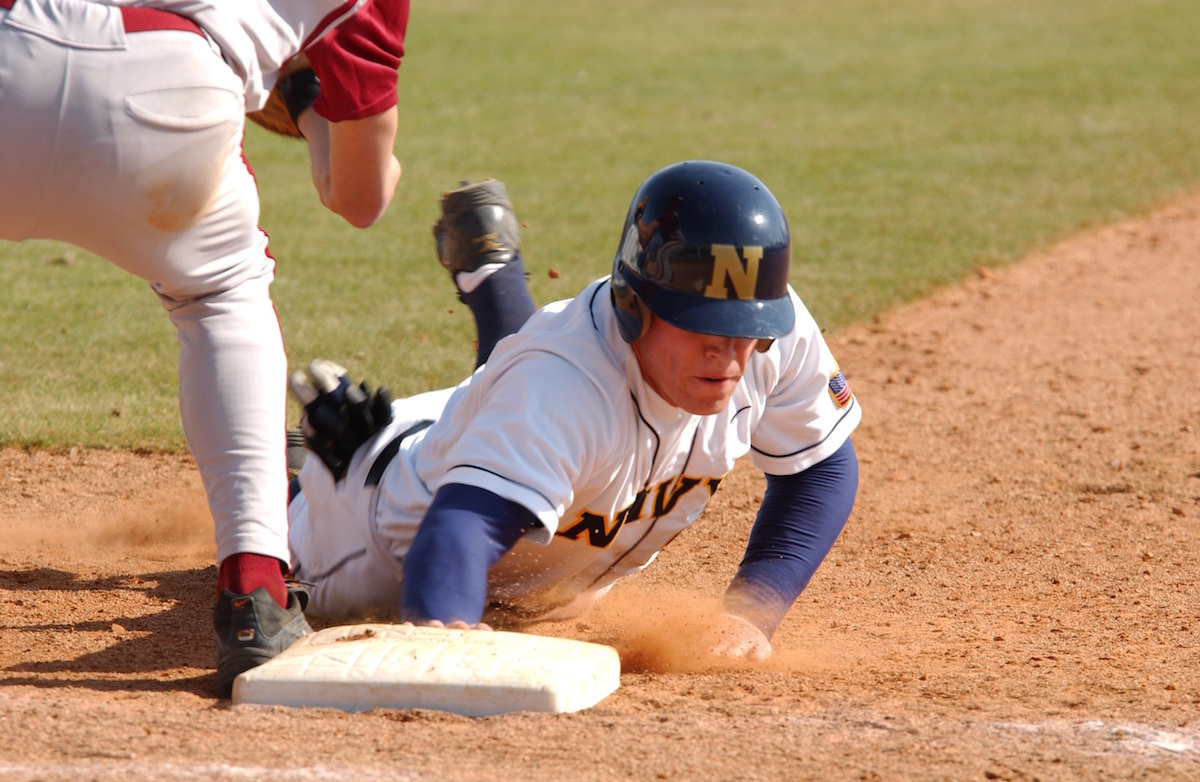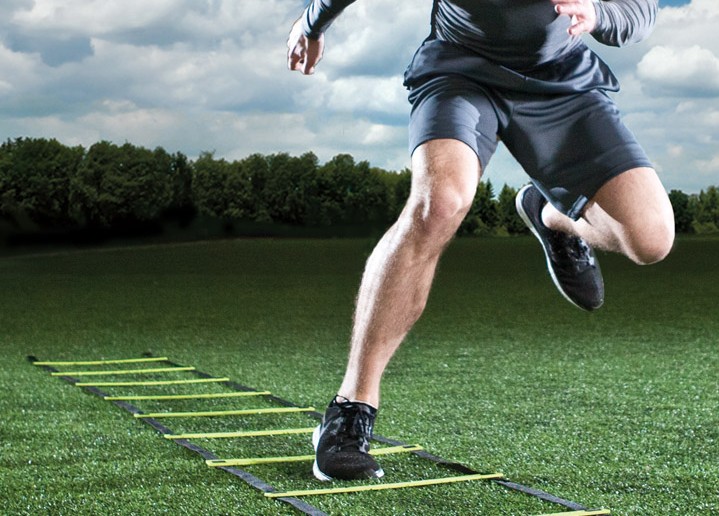The last two posts (Baseball speed and agility: part 1 and Baseball speed and agility: part 2) have been meant to be background information on the importance of speed/agility in baseball and some examples of drills that can be used to develop these qualities in a baseball-specific way. This post will present some thoughts on how to put all this together in terms of workout programs for the baseball player. The training concepts that we’ll cover will divide the baseball player’s training into three periods: getting into shape, applying that fitness to baseball, and more focused/specialized training.
Getting Into Shape:
For me, this is teaching movement basics and developing the fitness base. This is where all the fundamental skills are laid out and drilled until we can get them as close to being automatic as possible.
Each session should focus on mobility exercises, hamstring exercises, and ankle/shin strengthening exercises (all of which can be done as warm-up). Not only do these exercises help prepare the athlete for work, but they also address injury prevention.
Fundamental skills for a baseball player in an offensive situation include starting explosively, accelerating, maximum velocity, and the cross-over step in both directions. Fundamentals skills for a baseball player in a defensive situation include starting explosively, accelerating, the cross-over step in both directions, shuffling in both directions, and the back pedal. With that in mind, the table below shows 12 weeks of workouts to develop these qualities, based on training twice a week. Each session includes “game” drills to the athlete link the skills to the sport. Note that this work should be supplemented by strength training and plyometrics.
| Day One | Day Two |
| Warm-upOffensive:Sprints, 3-5×20 yardsGo Two drill (beginner), 3x
Defensive: Run to the ball (beginner), 3x Shuffle right/left, 3×5 yards |
Warm-upOffensive:Sprints, 3-5×60 yardsCross-over step drill (beginner), 3-5x
Defensive: Backpedal + turn and sprint, 3×5+5 yards Fielding the ball (beginner), 3-5x |
Applying Fitness To Baseball:
Once the athlete has the fundamentals down, training can step up a notch in terms of intensity and variety. It’s also important to begin incorporating the ball and the unpredictability that is inherent to real-world sports. The sample workout that follows builds upon the “Getting Into Shape” plan and begins working on some of the finer points of the athlete’s ability to run and change directions.
| Day One | Day Two |
| Warm-upStride length drills, 3×5 yardsResisted sprints, 3×5 yardsOffensive:
Sprints, 3-5×20 yards Go Two drill (intermediate), 3x
Defensive: Run to the ball (intermediate), 3x Shuffle right/left + sprint, 3×5+5 yards |
Warm-upBounds, 3×20 yardsStride length drills, 3×20-40 yardsOffensive:
Sprints, 3-5×60 yards Cross-over step drill (intermediate), 3-5x
Defensive: Backpedal + turn and sprint, 3×5+5 yards Fielding the ball (intermediate), 3-5x |
Focused/Specialized Training:
This is the period of maximum intensity and complication. The ball, pitchers, game situations,a nd game simulations are all incorporated. It also sees the highest intensity in terms of the speed training. Some of the fundamental skills, while still being reinforced, are no longer directly trained (for example, there’s no time for a shuffle right or left drill).
The end of each session focuses on a “game” that trains offensive and defensive speed/agility simultaneously. These games are explained at the end of this post.
| Day One | Day Two |
| Warm-upStride length drills, 3×5 yardsResisted sprints, 3×5 yardsOffensive:
Sprint, 3×20 yards Go Two drill (advanced), 3x
Defensive: Run to the ball (advanced), 3x
Game: Base stealing/defending drill, 15 minutes Double play, 10 minutes |
Warm-upBounds + sprint, 3×20 + 10 yardsStride length drills, 3×20-40 yardsOffensive:
Sprints, 3×60 yards Cross-over step drill (advanced), 3x
Defensive: Fielding the ball (advanced), 3x
Game: Running relays, 15 minutes Outfield relays, 10 minutes |
Game Training:
Base stealing/defending drill: Defense sets up at pitcher, catcher, second base, and short stop. Offense has a runner on first base a batter who does not swing. The pitcher pitches, the catcher catches, and the base runner tries to steal second.
Double play drill: Defense sets up the infield only. Offense has a runner on first base and a batter. Pitcher pitches, batter hits, and the defense tries to turn the double play while the offense tries to advance.
Running relay drill: Defense sets up the outfield, second base, third base, and short stop. Offense has a runner at first base with other offensive players lined up behind him. The ball is hit to the outfield and the runner tries to make it to third base.
Outfield relays: Defense sets up at right field, second base, and third base. Offense has a runner at first base. The ball is hit to the outfield and the runner tries to make it to third base, defense wants to make the play at third via hustling to the ball and relays.
Note: Games have been adapted from the third edition of the American Sport Education Program’s Coaching Youth Baseball book.




